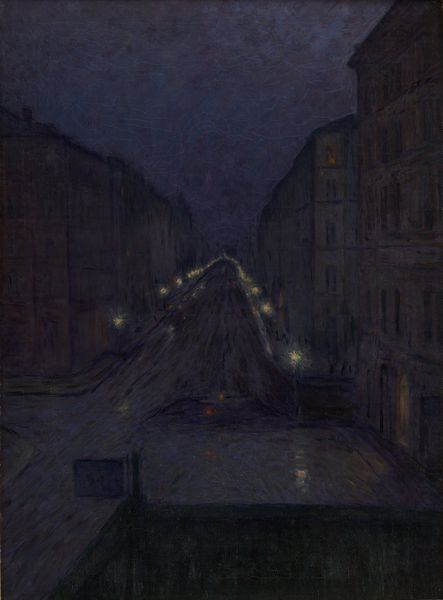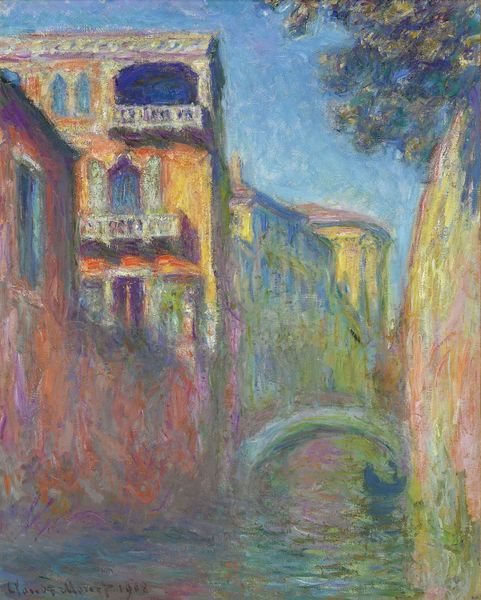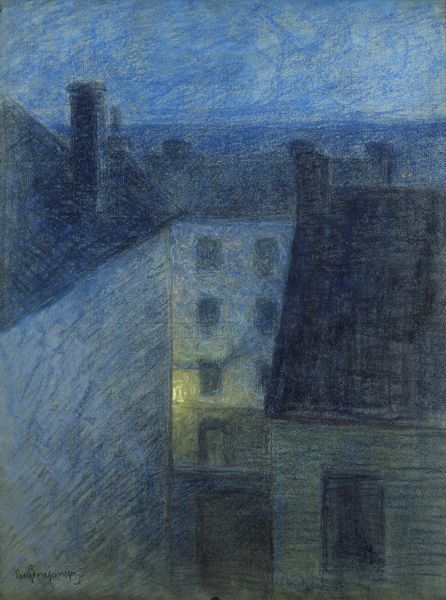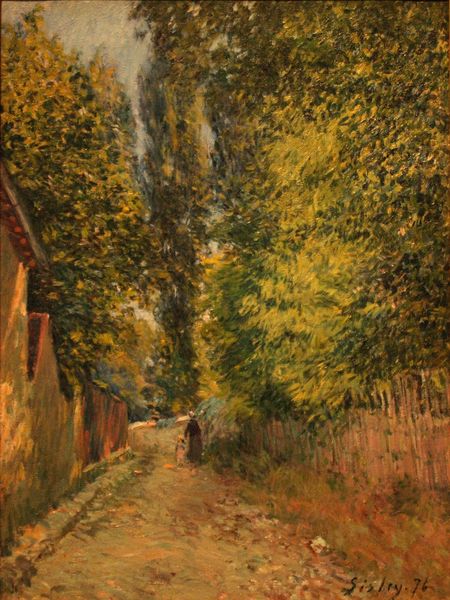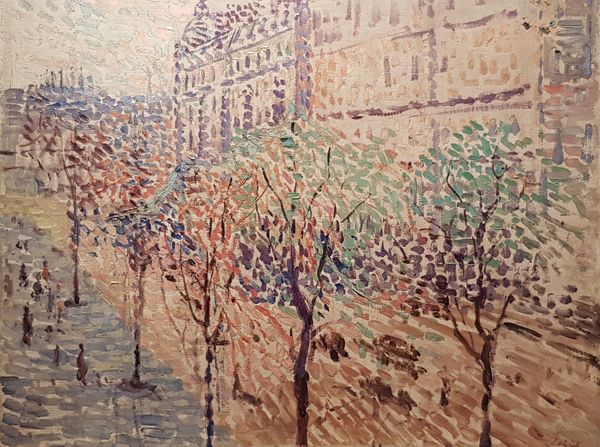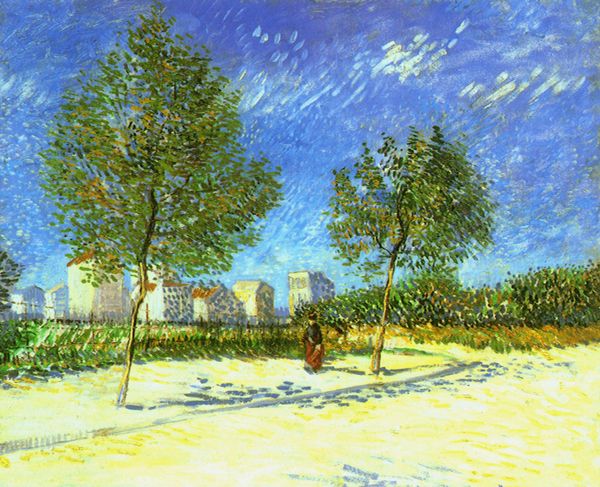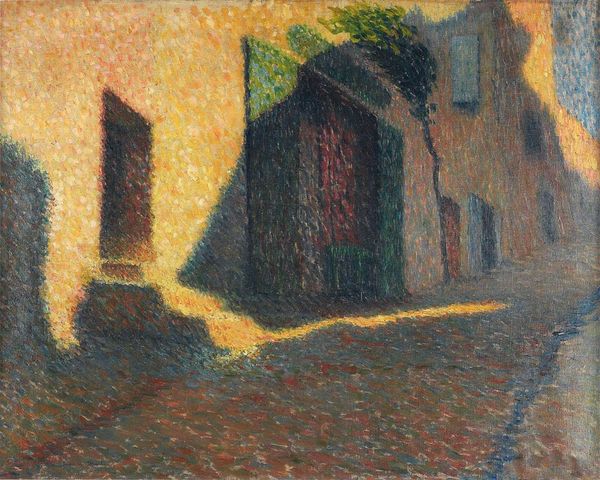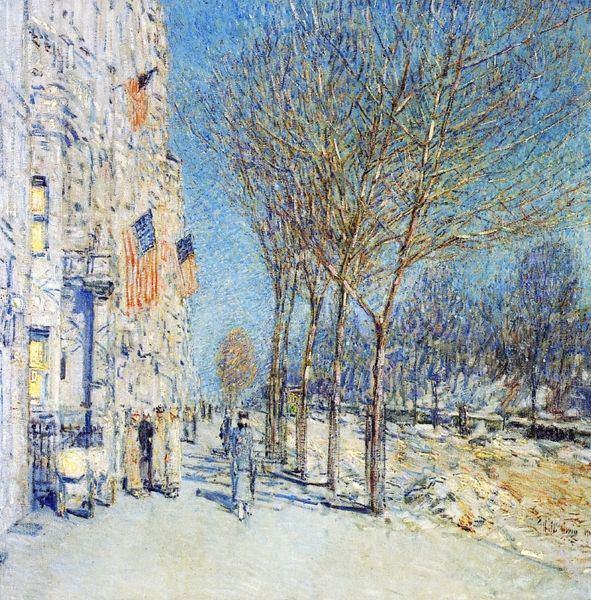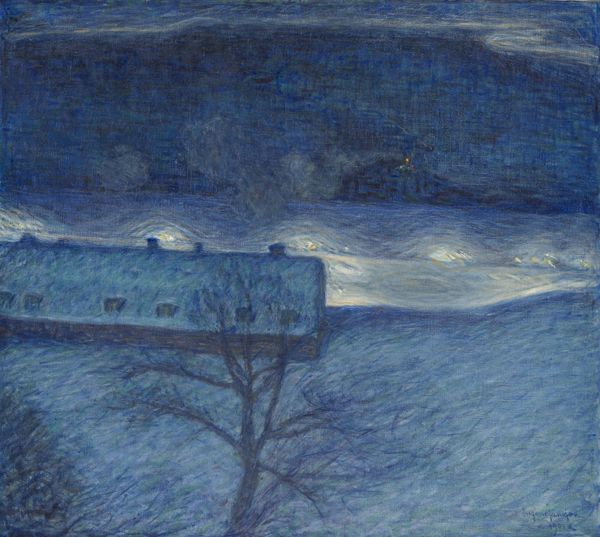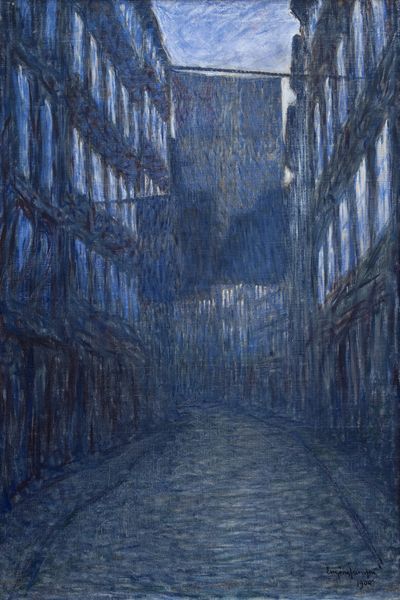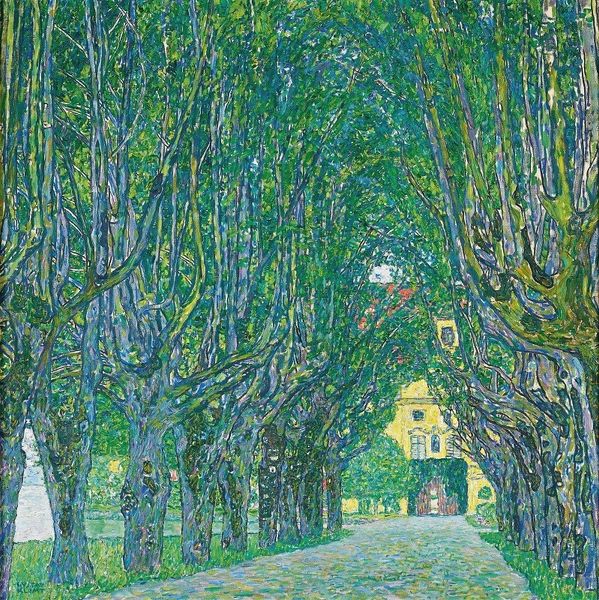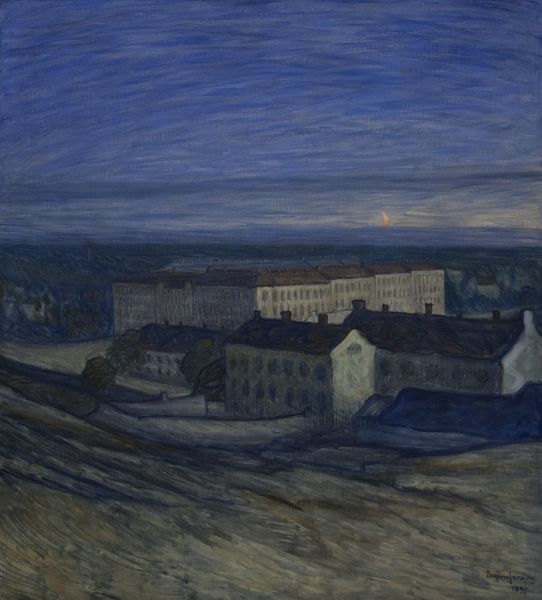
Copyright: Public domain
Curator: Eugène Jansson’s "At Dusk," completed in 1902, is a powerful depiction of a Stockholm street cloaked in the stillness of twilight. Jansson rendered this cityscape with oil paint. Editor: Immediately, I’m struck by the overwhelming blue. It feels almost oppressive, yet there's also a strange sense of tranquility. The artist’s technique, the visible brushstrokes, imbues the scene with an almost dreamlike quality. Curator: The almost monochromatic use of blue is characteristic of Jansson's "blue period." Looking at this through the lens of queer theory, one might interpret the blue tonality and dimness as representing a clandestine world, hinting at the hidden lives and suppressed desires of homosexual men in early 20th century Stockholm. This time period was characterized by strong social restrictions and cultural expectations around sexuality. Editor: It is definitely atmospheric. The darkness obscures the finer details, blurring the line between reality and suggestion. And that light at the vanishing point—is it inviting or is it an ominous glow? I think its fascinating how the streetlights play a very important role for this artist's body of work, often pointing out meeting places that otherwise would be less visible. Curator: That light, whether welcoming or foreboding, represents the public and private spaces of desire, doesn't it? It is this carefully structured ambiguity that made Jansson a favorite among modernist and symbolist movements, particularly among those queering societal norms. You see a street scene, but his audience, familiar with his visual codes, recognized a world coded with the artist's deepest longing. Editor: You can also read a deeper level into how city spaces were represented, especially with more and more queer artists feeling attracted to move to urban spaces to build new communities, with Stockholm having a lot of underground spaces where many found the room to connect and meet. Curator: Yes, that historical urban context of hidden enclaves adds a rich layer of interpretation, considering how that intersection of identities and urbanism has influenced artistic representations. Editor: It is as much a portrait of a time as it is of a place, capturing an emotional state bound up with the constraints and opportunities afforded by that place and time. Curator: Precisely, making “At Dusk” a powerful, coded statement beyond its formal qualities.
Comments
No comments
Be the first to comment and join the conversation on the ultimate creative platform.
